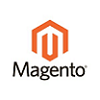7 Best Ecommerce Platforms 2023
Our independent research projects and impartial reviews are funded in part by affiliate commissions, at no extra cost to our readers. Learn more
An ecommerce platform should be two things: An online store where you can list and market your products to customers, and a place where you can successfully manage and grow a business.
We’ve tested each major platform and ecommerce website builder and, through our own experiences and detailed research, we’ve concluded that Shopify is the best ecommerce platform.
It truly is an ecommerce machine: a place where you can realistically run and grow your business, thanks to its top-of-the-range sales features and total integration with social channels like TikTok or Amazon. Simply put, it lets you build the store you want to create.
The 7 Best Ecommerce Platforms 2023
- Shopify – Best overall ecommerce platform
- Wix – Best industry-specific sales features
- Squarespace – Most stylish ecommerce templates
- WooCommerce – Best third-party extensions
- Square Online – Best for selling for free
- BigCommerce – Best SEO
- Magento – Best for enterprise-level sales features
It’s worth noting that each ecommerce platform offers different features and Wix, our runner-up, has great industry-specific features while Squarespace is better suited for small businesses or individual sellers.
Depending on your business, the right ecommerce platform may be different, and we’ve helped narrow down your search to the best seven. Let’s take a closer look!
Ecommerce Platforms: Tested and Compared
We’ve collected and summarized all the providers on this list so you can compare them directly. Use the arrows to see more!
| BEST IN TEST | ||||||
| Shopify | Wix | Squarespace | WooCommerce | BigCommerce | Square Online | Magento |
| Overall rating 4.8 | Overall rating 4.8 | Overall rating 4.4 | Overall rating 4.2 | Overall rating 4.1 | Overall rating 4.2 | Overall rating 4.0 |
| Best For Best overall ecommerce platform | Best For Best industry-specific sales features | Best For Most stylish ecommerce templates | Best For Best third-party extensions | Best For Best for SEO | Best For Best for selling for free | Best For Best for enterprise-level sales features |
| Starting Price $29 | Starting Price | Starting Price | Starting Price Depends on web host | Starting Price $29 | Starting Price $29 | Starting Price $59.99 |
| Transaction Fees 2.9% + $0.30 | Transaction Fees 2.9% plus $0.30 | Transaction Fees 0% – 3% | Transaction Fees 2.9% + $0.30 (+1% for non-US customers) | Transaction Fees None | Transaction Fees 2.9% + $0.30 | Transaction Fees 2.9% +$0.30 |
| Sales features 4.7 | Sales features 4.5 | Sales features 3.7 | Sales features 4.1 | Sales features 4.6 | Sales features 3.6 | Sales features 4.0 |
| Drag and Drop editor | Drag and Drop editor | Drag and Drop editor | Drag and Drop editor | Drag and Drop editor | Drag and Drop editor | Drag and Drop editor |
What is an Ecommerce Platform?
An ecommerce platform is a website builder that lets you run your business and handle trade through the platform.
This is not to say your business must operate this way – many ecommerce platforms are built to run in tandem with physical stores, like Shopify’s POS – but what differs is that ecommerce platforms allow you to run your business through them, as not all website business builders do.
1. Shopify
Best ecommerce platform overall
Pricing range: $29–$299 per month
Shopify
Best overall ecommerce platform
- Built for large stores
- Third party integrations
- Recommended by real users
Free trial available
Paid Plans: $29 - $299 / month
Pros
-
AI Sidekick for help with your store
-
Abandoned cart recovery on all plans
-
Best sales features we've tested
Cons
-
Third party app reliant
-
Transaction fees for most payment tools
-
Many themes locked behind paywall
Shopify is our number one recommended ecommerce platform because it sits in the sweet spot of being able to scale large store inventories while also having a good degree of customization. From our experience, the larger a store your ecommerce platform can handle, the less control you have over your store’s design.
But Shopify’s slogan promises ‘Your store, your way’ – and we’ve found it delivers on this.
Pricing and Transaction Fees
Each of these plans has all the necessary sales features to create an online store (which we will get into later). Their minor differences are relative to the size of business they are best for.
- Basic Plan: $29 per month (billed annually)
- Target Audience: individuals or small businesses
- Transaction fees: 2.9% + $0.30 online or 2.7% in person
- What’s included: basic reports, 1,000 inventory locations, 77% shipping discount, two staff accounts
- Shopify Plan: $79 per month (billed annually)
- Target Audience: small businesses looking to expand
- Transaction fees: 2.6% + $0.30 online or 2.5% in person
- What’s included: professional reports, 1,000 inventory locations, 88% shipping discount, five staff accounts
- Advanced Plan: $299 per month (billed annually)
- Target audience: medium businesses to enterprises
- Transaction fees: 2.4% + $0.30 online or 2.4% in person
- What’s included: custom report builder, 1,000 inventory locations, 88% shipping discount, 15 staff accounts
Shopify’s pricing isn’t the best value for money we’ve seen, but while all ecommerce platforms increased their prices recently, Shopify was also one of the only platforms to offer more features for the same price. For instance, the AI text generation tool Shopify Magic was added for free across all of Shopify’s plans. Therefore, we jumped its value for money score in our rankings by 20% from 3 to 3.6 out of 5.
Does Shopify have a free plan?
No, but it does have a three-day free trial and an exclusive deal for new members. You can get Shopify for only $1 per month for the first three months if you’re a new member.
Shopify Sales Features
Shopify has the best sales features we’ve tested, coming first in our rankings with a 4.7 out of 5. In terms of quantity and quality, you won’t see better than this. Its most important sales features are:
- Built-in abandoned cart recovery, helping catch incomplete sales
- App store with 8,000 apps, giving you access to new and niche features
- Online invoice generator makes billing and collecting money easier
- Syncs with 10 other sales platforms, including Amazon, Google, and Walmart
- Sell unlimited products on all plans
- Easily customize your checkout with your logo, brand colors, and font
All of these features are essential for running a successful store, and Shopify includes them across all plans as standard.
A particular pain point for our readers reveal is that the more an ecommerce platform can handle, the less easy to use it becomes. What makes Shopify great is its ability to teach users how to use its sales features, it even included a new AI sidekick to help run your business with you by tackling time-consuming tasks such as changing prices for collections, while also giving you helpful ecommerce advice.
One area we feel Shopify could improve upon is its reliance on third-party apps. Membership areas for subscribers, pop-ups for showcasing new deals, and even targeted email marketing are all tied to one of Shopify’s 8,000 apps. Other competitors like Wix or Squarespace have these features built into the platform. For newcomers, it can be frustrating to have to download an app for essential features – especially when said app can run a subscription fee of $5-$300 per month.
- Shopify Payments
- Credit/debit cards
- PayPal
- Gift card payments
- Buy Now Pay Later
- Manual payments (cash on delivery)
- Crypto wallets
- Shopify Payments
- PayPal
- GooglePay
- AmazonPay
- Stripe
- Square POS
- ApplePay
- +100 more
- Amazon
- Ebay
- Etsy
You can integrate your store with these channels:
- Facebook Messenger
- Wanelo
- Houzz
- Buzzfeed
- Kik
- Snapchat
- TikTok
- Add product and product images to collections and keep your store up to date
- Scan barcodes to adjust inventory and stop orders piling up
- See live sales, visitor traffic, and conversion details so you’re always in the know
- Get order notifications and communicate with staff to maintain smooth service
- Manage store across locations and sales channels so you don’t miss sales
- Browse templates and change the look of the store on the go
Shopify in Action: Frontier Blades
Q&A
Why did you want to use an ecommerce platform and why did you choose Shopify?
How long have you been using Shopify?
What do you like most about Shopify?
Is there anything you'd change about Shopify?
Would you recommend Shopify to others?



2. Wix
Best industry-specific sales features
Pricing range: $27–$159 per month
Wix
Best industry-specific sales features
- Plenty of design freedom
- Powerful features
- Easy to use
Free trial available
Paid Plans: $16 - $159 / month
Pros
-
Large range of free store templates
-
Intuitive inventory system
-
Best help and support we've tested
Cons
-
Can't scale for very large stores
-
Ecommerce-specific apps can cost
-
Can’t change templates once site is live
We ranked Wix’s sales features a 4.5 out of 5, meaning they aren’t as powerful as what you’ll get with Shopify or BigCommerce. However, Wix still earns second place in this ranking for being a perfect blend of sales features and ease of use.
What sets Wix apart from other competitors is the amount of features and integration it includes. Merchants using Wix get access to really useful built-in features like membership areas for customers, pop-up ads, and email marketing. You can even create campaigns on Google Ads from the Wix dashboard, a service that’s responsible for 80% of the daily ads users see online, increasing your site’s visibility.
Pricing and Transaction Fees
Wix has three ecommerce plans, and each one is fit for a differently-sized store. Wix’s pricing recently changed, with the Business Elite plan increasing its features offered to accommodate large businesses, and raising its price to $159 per month.
When compared with Shopify, Wix offers way more features for the price and you won’t need to pay for plugins or themes. In our research, Wix is our best value-for-money ecommerce platform with a 4.4 out of 5, and its plan that offers the best value is the Business for $32 per month.
Here’s an overview of its plans:
- Core: $27 per month (billed annually)
- Target Audience: individuals or small businesses
- What’s included: Basic Commerce + Marketing suite, 50GB storage space, and five staff accounts
- Business: $32 per month (billed annually)
- Target Audience: Small businesses looking to grow
- What’s included: Standard Commerce + Marketing suite, 100GB storage space, and 10 staff accounts
- Business Elite: $159 per month (billed annually)
- Target Audience: medium to large businesses
- What’s included: Developer platform, Advanced Commerce + Marketing suite, unlimited storage space, and 15 staff accounts
Wix’s only transaction fee is 2.9% + $0.30 on all credit, debit card, and ApplePay payments. If you plan to use Wix POS, the transaction fee is 2.6%.
Does Wix have a free plan?
Wix does have a free plan but, unless you upgrade to one of the ecommerce plans, you can’t accept payment.
Wix Sales Features
We rated Wix just below Shopify due to the sheer amount of supplementary features its competitor offers across its plans. However, Wix does have a dedicated tool or service for nearly everything, such as:
- Wix Bookings
- Wix Events
- Wix Restaurants
- Wix Fit
In terms of features just designed for selling products, Wix isn’t as powerful as Shopify or BigCommerce (though it still comes third overall for sales features in our rankings with a 4.5 out of 5 in our research). There is a limit of 50,000 products; you aren’t able to sell through Google; and there’s no fraud detection on payments, leaving your transactions at risk.
What Wix can do (that others can’t) is support you in the creation of the exact type of store you want. The guides and services are tailored to certain industries, and include all the crucial features you will need. For example, Wix Fit includes booking, scheduling, and membership areas as these are the features most requested from customers – saving you the trial and error of figuring it out yourself.
- Wix Payments
- Credit/debit cards
- PayPal
- Gift cards
- Buy Now Pay Later
- Crypto Wallets
- SEPA payments
- Wix Payment
- Stripe
- Square
- PayPal
- Pinwheel
- Braintree
- Klarna
- Pay U
- COD
- +40 more
- Amazon
- Walmart
- eBay
- Etsy
You can integrate your Wix store with:
- Set up and customize your site on the member apps
- Manage all aspects of your business
- Communicate with your members and live site visitors
- View your site’s analytics
- Promote your business with email campaigns
Wix also has mobile apps for customers to use:
- Spaces by Wix – customers can contact your business directly and be part of a community
- Fit by Wix – for fitness sites, customers can buy memberships, sign up for classes, and purchase merchandise
- Dine by Wix – for restaurants or food-related businesses, customers can order food for pickup and view menus, encouraging brand loyalty
Wix in Action: Invictus
Q&A
Why did you want to use an ecommerce platform and why did you choose Wix?
I chose Wix because:
- I need something relatively plug-and-play.
- I want to offer many different things on my site that I can manage from one location – podcasts, membership, and courses.
- I want to be able to do different kinds of email marketing, lead generation, funnels, and eventually client service migration. Wix allows all of that in a relatively easy way.
- I need it all to look professional and classy.
How long have you been using Wix?
What do you like most about Wix?
Is there anything you'd change about Wix?
Would you recommend Wix to others?



Further Information:
- Check out our definitive ranking of the best free ecommerce website builders and see how much you’ll be saving
3. Squarespace
Most stylish ecommerce templates
Pricing Range: $23–$49 per month
Squarespace
Most stylish ecommerce templates
- Good value starting plan
- Most stylish templates
- Great built-in tools
Free trial available
Paid Plans: $16 - $49 / month
Pros
-
Most creative control
-
The easiest ecommerce platform to use
-
Powerful AI-text writer
Cons
-
Not built for very large stores
-
3% transaction fees
-
Editor doesn’t autosave your changes
If you are looking for an ecommerce platform that prioritizes ease of use and stylish professional templates, look no further than Squarespace.
It’s one of the best small business ecommerce website builders and is the easiest-to-use platform. We recommend Squarespace for users who want an active role in building and designing a store. However, Squarespace can’t handle larger stores like Shopify or BigCommerce, so it only scores 3.7 out of 5 for sales features in our research.
Pricing and Transaction Fees
Unlike other competitors, Squarespace is much more suited to individual and small business selling. It has three ecommerce plans:
- Business: $23 per month (billed annually)
- Transaction fees: 3%
- What’s Included: unlimited products, unlimited staff accounts
- Basic Commerce: $27 per month (billed annually)
- Transaction fees: none
- What’s included: unlimited products, unlimited staff accounts, point of sale, Facebook and Instagram selling, product reviews
- Advanced Commerce: $49 per month (billed annually)
- Transaction fees: none
- What’s included: unlimited products, unlimited staff accounts, point of sale, Facebook and Instagram selling, product reviews, abandoned cart recovery, selling subscriptions, advanced shipping
From our own experience, Squarespace’s pricing has always been more affordable than its competitors. However, its value for money score dropped by 13.6%, shifting from 4.4 to 3.8 out of 5 in our last round of testing. This was due to the Business plan increasing in cost by 28% with no additional features. This is disappointing, especially when the Business plan comes without vital sales features like multi-channel selling or abandoned cart recovery.
Does Squarespace have a free plan?
While Squarespace doesn’t have a free plan, it does have a 14-day free trial.
Squarespace Sales Features
As a design-focused ecommerce platform, Squarespace’s store templates are some of the most stylish we’ve come across, and the platform earned the highest ease of use score in our research: 4.4 out of 5. As one of our hands-on testers said:
“Squarespace is the standard that most ecommerce builders should be at. Why should anything be any harder than that?”
While great design and ease of use make for an enjoyable building process, Squarespace is better suited for individual and small business selling, especially if they are art related. It’s worth noting that important sales features like abandoned cart recovery (for retaining customers) or selling subscriptions for digital products are locked behind the most expensive plan. If you wish to grow your store and scale up, you’d be better off with Shopify or Wix.
- Credit/debit cards
- PayPal
- Gift cards
- Buy Now Pay Later
- Stripe
- PayPal
- AfterPay
- Square
Squarespace has multichannel support for Facebook and Instagram, but only for the Basic Commerce plan and above.
- Update pages when you’re away from your computer
- Add new images to galleries and blocks directly from your device
- Write and edit new blog posts
- Review traffic and other site analytics
- Manage your store’s inventory and orders on the go
- Create marketing content (IOS only)



4. WooCommerce
Best third-party extensions
Pricing: $9.95 per month
WooCommerce
Best third-party extensions
- Very WordPress-compatible
- Built for large stores
- Helpful setup wizard
Free plan available
Paid Plans: $12.95 / month
Pros
-
55,000 plugins available
-
Lots of payment options
-
Tools for selling internationally
Cons
-
Performance dependant on host
-
Themes can cost $39-$79
-
Only works with WordPress
WooCommerce is an ecommerce plugin for WordPress, which is what over 40% of the internet’s websites are built with. Unlike other ecommerce platforms on this list, WooCommerce has no drag-and-drop editor. You will have to rely on extensions and a bit of coding to create your store which, from our experience, can alienate beginners.
However, this also means if you have any code experience, you’ll have unlimited creative access to create the store you want. WooCommerce can be modified with strong sales features to handle larger stores than Shopify, though novices will need guidance on how to create such a store.
Pricing and Transaction Fees
All websites need a hosting provider, but because WooCommerce is free, you will need to sign up and pay for one separately. Bluehost is our recommended hosting provider because it has several WooCommerce-specific plans, and it’s also officially recommended by WooCommerce and WordPress for hosting. The cheapest WooComemrce hosting plans from Bluehost start at $9.95 per month.
If that all sounds like too much hassle, WooCommerce has introduced a $25 per month Woo Express plan, which includes hosting. This plan is convenient for users who want access to WooCommerce’s platform but don’t have the time to learn code or find a hosting provider.
WooCommerce has a flat transaction fee of 2.9% + $0.30 on all card transactions, plus an extra 1% for all non-US customers.
Does WooCommerce have a free plan?
While WooCommerce is technically free, using the platform means paying separately for several items usually included with an ecommerce platform plan. These are the average minimum costs of what you will need for a WooCommerce store:
Domain: $10-$20 per year
Hosting: $35-$50 per year
Themes: $39+
WooCommerce Sales Features
WooCommerce relies on extensions for nearly all of its sales features. Abandoned cart recovery, gift cards, Google Ad campaigns, and even coupons require an extension. Even Shopify provides more in-built features than WooCommerce.
The WooCommerce store has over 55,000 extensions, meaning there is certainly a tool for whatever feature you need. However, even the most essential tools like checkout customization or data backups can cost a minimum of $49 per year. These prices start to stack up, so we don’t recommend WooCommerce unless you can afford the extensions.
You can judge the quality of each extension before you commit by looking at user reviews, which saves time and gives you a good idea of what extensions are essential and which aren’t. In our research, we gave WooCommerce a 4.1 out of 5 for sales features. Even though you do have to download them separately, they are high quality and especially good for larger stores, where depth equals an easier flow of transactions.
- WooPayments
- Credit/debit cards
- PayPal
- Gift cards
- Buy Now Pay Later
- Crypto wallets
- WooPayments
- Stripe
- PayPal
- Square
- Klarna
- Amazon Pay
- + 70 more
You can also accept in-person payments for your store through an Apple Pay integration.



5. BigCommerce
Best for SEO
Pricing range: $29 per month–$299/month
BigCommerce
Best for SEO
- Built for retailers
- Great SEO
- Not the easiest to use
Free trial available
Paid Plans: $29 - $299 / month
Pros
-
Excellent SEO features
-
Great for scaling your business
-
No transaction fees
Cons
-
More pricier than competitors
-
No drag-and-drop editor
-
Third-party apps needed
BigCommerce comes second overall in our ranking for sales features with 4.6 out of 5. Designed for selling, it also has the best SEO of any platform on this list, letting you customize the meta title and keywords for every page on your store.
While BigCommerce is great for online selling, it does have the lowest ease of use score on this list, which holds it back. However, good SEO and sales features are important for ecommerce success, so let’s look at BigCommerce’s other features.
Pricing and Transaction Fees
BigCommerce has three ecommerce plans, which are very similar to Shopify in terms of price and features offered. Like Shopify, BigCommerce also increased its features as ecommerce prices increased. Since our last testing, BigCommerce’s value-for-money score rose by 13% from a score of 3 to 3.4 out of 5.
Here’s the breakdown of BigCommerce’s pricing:
- Standard: $29 per month (billed annually)
- Target audience: online sales up to $50K per year
- What’s included: unlimited staff accounts, unlimited products, unlimited storage, up to three storefronts
- Plus: $79 per month (billed annually)
- Target audience: online sales up to $180K per year
- What’s included: unlimited staff accounts, unlimited products, unlimited storage, up to five storefronts, abandoned cart recovery, stored credit cards, persistent card
- Pro: $299 per month (billed annually)
- Target audience: online sales up to $400K per year
- What’s included: unlimited staff accounts, unlimited products, unlimited storage, up to eight storefronts, abandoned cart recovery, stored credit cards, persistent card, Google customer reviews
One standout feature of BigCommerce is no transaction fees across all of its plans. This means all the money you charge for a product is yours to keep.
Does BigCommerce have a free plan?
BigCommerce does not have a free plan, but it does offer a 14-day free trial.
BigCommerce Sales Features
Taking second place in our overall sales features ranking with a 4.6 out of 5, you can expect BigCommerce’s sales features to be of similar quality to that of Wix and Shopify. Some of the standouts from our testing are:
- Real-time shipping quotes, which builds trust with your customer as you’re giving them the most accurate rates possible
- Accepting +100 forms of currency, increases your potential audience size
- Coupons and discount codes, which entices shoppers to make a purchase
- Product ratings and reviews, builds confidence for the shopper and it’s great for SEO
SEO is where BigCommerce excels. Each page has in-depth SEO fields where you can customize and edit vital components like keywords and meta titles. Features like these keep new customers coming to your store, so it’s vital for a successful online store to keep track and update when needed.
What keeps BigCommerce so far down this list is its poor ease of use. It scores 3.3 out of 5 for ease of use, the lowest score in our rankings. Our testers commented that the constant jumping from the front end to the back was frustrating and this affected the visual design of their stores.
- Credit/debit cards
- PayPal
- Crypto wallets
- Buy Now Pay Later
- World Pay
- PayPal
- Stripe
- Square
- Amazon Pay
- Chase Pay
- Venmo
- Amazon
- eBay
- Google Shopping
- Walmart
You can also sell on the following social media platforms:
The app is available on both IOS and the Google Play Store.



6. Square Online
Best for selling for free
Pricing range: free–$79 per month
Square Online
Best for selling for free
- Quick setup
- Free to sell
- Decent sales features
Free plan available
Paid Plans: $12 - $79 / month
Pros
-
Free to sell
-
Best for restaurants
-
POS integration
Cons
-
Limited design freedom
-
Few payment processing options
-
Expensive upgrade cost
Square Online is the only ecommerce platform on this list that allows you to sell for free. Not having to pay any form of subscription to sell is a huge relief, especially to users worried about start-up costs.
However, you get what you pay for with Square Online. The free plan does not have many sales features – like having no PayPal integration – and it certainly can’t handle bigger stores. You do still get access to Square’s POS system, which allows you to accept in-person payments and is active in thousands of businesses around the world, especially in restaurant and food-related industries.
Pricing and Transaction Fees
Square Online has two pricing plans and these are geared towards small to medium-sized businesses. With these plans, you get a full range of sales features, such as abandoned cart recovery, item quantity limits, and even a custom domain. It is nearly essential to upgrade after a while:
- Plus: $29 per month (billed annually)
- Transaction fee: 2.9% + $0.30 OR 2.6% + $0.10 in-person
- Delivery fee: $1.50 per order OR $0.50 per order third-party courier
- Premium: $79 per month (billed annually)
- Transaction fee: 2.6% + $0.30 OR 2.6% + $0.10 in-person
- Delivery fee: $1.50 per order OR Free for third-party courier
In our research, Square Online came second overall for value for money, scoring 4.2 out of 5. We should mention it used to be in first place in 2022 when the Plus plan only cost $12 per month. Since then, the price has increased by 142%, the most dramatic increase we saw in our testing.
Does Square Online have a free plan?
Square Online has a free plan, and it’s the only one that allows you to sell for free. Here’s what the plan does (and doesn’t) include:
- Free: $0 per month
- Transaction fee: 2.9% + $0.30 OR 2.6% + $0.10 in-person
- Delivery fee: $1.50 per order OR $0.50 per order third-party courier
- What’s included: Website builder, social media integration, shipping, unlimited items, marketing package (including SEO)
- What’s not included: custom domain, professional branding, customer accounts, item quantity limits, PayPal compatibility, product reviews, analytics
Square Online’s Sales Features
Square Online’s sales features aren’t built for running large businesses like Shopify or WooCommerce, but it is great for having in tandem with a physical storefront – especially if you already use its POS system. Square Online controls nearly 30% of the Point of Sale industry, which has a market size estimated at $103 billion. POS systems are especially useful for restaurants, syncing orders both online and in person. Many ecommerce platforms utilize them, like Shopify, but only Square has several feature packages such as Square for Restaurants in place for users – a great benefit for those nervous about taking their first steps.
Overall, Square Online’s sales features are decent, but nothing to write home about. Vital features like item limits are not available until you upgrade, and you’ll miss out on marketplace integrations with platforms like Amazon, which are offered by Shopify and WooCommerce. In our research, we gave Square Online a 3.6 out of 5, the lowest on this list. It’s still the only platform that allows you to sell for free, as long as you can manage the lack of features.
- Credit/debit card
- Square Pay
- PayPal (Paid plan only)
- Crypto wallets
- Gift cards
- SquarePay
- PayPal (Paid plan only)
- ApplePay
- Google Pay
- Stripe
- Amazon Pay
- AfterPay
- Facebook (Ads only)
However, Square Online does have an app for its Point of Sale system. The Square POS app is available for free on IOS and the Google Play Store, and allows business owners to accept payments using their phone, making it perfect for entrepreneurs on the go or those running market stalls.



7. Magento
Best for enterprise-level sales features
Pricing: $59.99 per month
Magento
Best for enterprise-level sales features
- Access to Adobe Suite
- Very scalable
- Not very easy to use
Free plan available
Paid Plans: $6.99 / month
Pros
-
Users get free Abode Suite
-
Can manage thousands of products
-
Trusted by brands like Nike and Samsung
Cons
-
Difficult setup and installation process
-
Made for experts
-
Most expensive platform
We don’t recommend Magento if you’re a beginner or an individual seller – Magento is meant for the biggest enterprise-level online stores. It can be difficult to use, so if you don’t think you’ll reach that level, you’re better off using another platform.
Like WooCommerce, Magento is an open-source platform so it’s technically free, but you will need to find your own hosting provider, themes, and extensions. Magento users also get free access to Adobe’s suite of products like PhotoShop and Premier Pro, which is a great deal because these can cost over $50 per month!
Pricing and Transaction Fees
You will need to locate your own hosting to use Magento. But unlike WooCommerce, not many hosting providers provide dedicated Magento plans. A2 Hosting was one of the few we found, with plans ranging from $59.99 per month (billed annually) for unmanaged VPS at the cheapest.
The most expensive could cost you $529.99 per month, so we only recommend upgrading Magento if you have the funds to support it. There’s also the transaction fee of 2.9% +$0.30, and the fact that 31% of Magento extensions cost between $94-$9,000. If you don’t have the means to sustain a Magento store, perhaps consider a cheaper builder like Squarespace.
Does Magento have a free plan?
Magento is technically free to download, but it requires a number of other subscriptions to fully utilize. Users could quickly see their Magento bill reaching $15,000 per year, which may seem incredulous but keep in mind that Magento is priced for stores that will make at least double that amount per year as a minimum.
Magento Sales Features
Magento is the chosen ecommerce platform for companies like Coca-Cola, T-Mobile, and Krispy Kreme. Although it has a high price tag, it is one of the few platforms to handle the functions needed by these big brands.
Its true crowning achievement is its inventory system, which supports bulk product imports, revenue reports, multiple product variables, and stock management. Being able to handle thousands of products and transactions at once is essential to maintaining a large store’s growth, so we rated its sales features 4 out of 5 in our rankings.
The complexity of its features led to our testers finding Magento difficult to use. The brands that use Magento have developers to manage the site. If you have no experience or can’t afford to hire someone to manage your store behind the scenes, you will most likely struggle due to the amount of technical jargon and code required.
- Check/money order
- Bank transfer
- Cash on delivery
- Purchase order
- Zero subtotal checkout
- PayPal
- Authorize.net



How to Choose an Ecommerce Platform
To help you make the most informed decision about which ecommerce platform you should choose, consider the following criteria:
- Budget
How much money do you have? Have you considered start-up costs? How much money do you expect to make in the first year? Do you have any other outgoing costs that could affect your business?
For instance, if you already have a successful business – perhaps even a physical location – then go with Shopify because it has the best sales features. If you are starting from nothing, it’s wiser to begin with Square Online’s free plan and upgrade as you start to earn.
- Size of business
How large is your business currently? How large would you like it to be? Do you have any employees? What do you need in terms of infrastructure?
The size of your business is also important to consider. There’s no point paying for an enterprise-level ecommerce platform like Magento if you just sell hand-knitted wool hats. Likewise, your store will suffer if you refuse to upgrade if your store gets larger.
- Specialty features and niches
What features do I need? Who is my target audience? How can I move into this niche? How do I attract my target audience?
Sometimes ecommerce platforms have features that are unavailable on other platforms. For instance, Wix’s industry-specific features like Wix Fit or Wix Menu are perfect for tackling niches such as fitness sites or restaurants. This is because they contain the right mix of features you need, saving you a lot of hassle.
- Ecommerce revenue
How important is this business? Is it your main revenue stream? Is it a side hustle? How much time are you willing to put in to run it?
You shouldn’t sign up to create a huge online store if you can’t spare the time to manage it. If you already have a job, you may be better off setting up a smaller store as a side hustle. Burnout is a real issue, so take care of yourself and don’t try to take on too much!
Our Testing Methodology
We’ve carried out in-depth research on over 50 of the top ecommerce platforms to bring you the best data-led recommendations. Our goal is to help you find an ecommerce platform that meets your needs. We have years of reviews, guides, lists, and graphs to back us up and reassure you that every opinion we share is honest and backed by facts.
Our writers test each and every platform themselves, providing crucial insights that aren’t found anywhere else on the web. We make sure to include the good, the bad, and everything in between in our reviews. We weigh them all differently so they appeal to the specific platform you are looking for. We also speak to real-life online business owners (you can read some of them here) to understand what their actual pain points are with every platform we review.
Best Ecommerce Platforms: Round-Up
We’ve considered all audiences and users in this recommendation, and we can confidently prove that Shopify is the best ecommerce platform. It has the best sales features of all the platforms we tested and it gives you the freedom to make the store you want without any compromise on performance or size.
Wix is a great choice for industry-specific stores like fitness or food, while Squarespace’s stylish templates and amazing ease of use make it perfect for small businesses or individual sellers.
The right ecommerce platform for you will depend entirely upon the needs of your business. No two are completely alike, but we have made a judgment on what we think is the best. Let us know which is your favorite in the comments!














Leave a comment